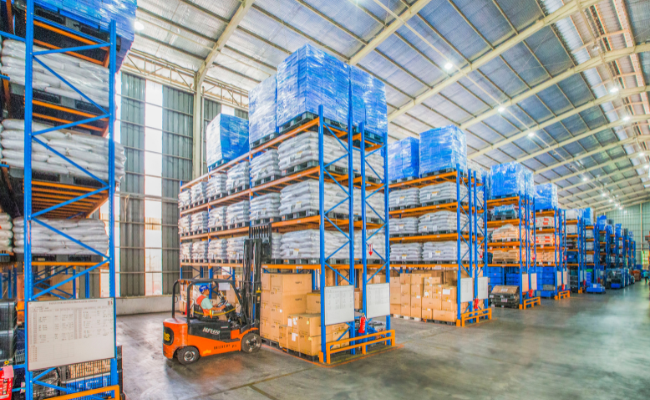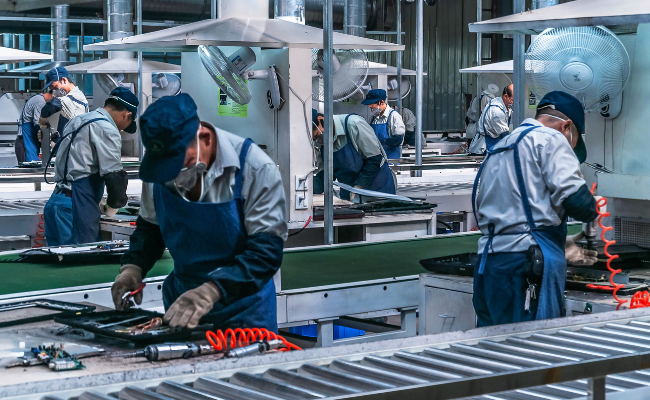China stands as an economic powerhouse responsible for an astounding 50% of global industrial output. This immense capacity has attracted businesses worldwide to engage in China sourcing, where the convergence of quality and affordability is unparalleled. However, effectively navigating this expansive manufacturing landscape requires specialized expertise, particularly when engaging with Original Equipment Manufacturers (OEMs).
This guide aims to elucidate the realm of OEMs within the context of China sourcing. From defining what an OEM is and exploring its advantages, to selecting the ideal partner and harnessing the insights of sourcing agents, we embark on a comprehensive journey. Our goal is to equip businesses with the knowledge necessary to thrive in the fiercely competitive domain of international manufacturing.
An Original Equipment Manufacturer (OEM) is fundamentally a company that produces components used in the products of another entity, which then markets the final goods to end-users. While the term might suggest the OEM owns the creative origin of the product, in reality, OEMs typically manufacture based on specifications provided by their clients. This partnership model is crucial for companies lacking specialized manufacturing infrastructure or seeking a cost-effective outsourcing solution.
In today’s landscape, where innovation and cost-efficiency reign supreme, OEMs occupy a pivotal position. They empower businesses to transcend manufacturing limitations, offering a pathway to scalability, innovation, and global competitiveness. The strategic significance of OEMs, especially within China’s expansive manufacturing ecosystem, cannot be overstated. Leveraging advanced technology and scalable production capacities, China presents an ideal landscape for fostering OEM partnerships that drive business expansion and product evolution.
A key advantage of working with OEMs is gaining access to top-tier manufacturing quality and innovative production techniques. OEMs in China, equipped with state-of-the-art technology and deep manufacturing expertise, can produce goods that meet rigorous quality standards. This access to quality and innovation is essential for businesses aiming to differentiate their products in a competitive market.
The economic benefits of partnering with OEMs are substantial. By outsourcing production to OEMs, businesses can achieve significant savings on manufacturing and operational expenses. This cost efficiency arises from OEMs’ ability to capitalize on economies of scale, advanced technology, and specialized knowledge to manufacture goods more efficiently than would be feasible internally.
Engaging with an OEM enables businesses to concentrate on their core strengths, such as product development, marketing, and strategic planning. This strategic resource allocation can expedite growth and bolster competitiveness, liberating businesses from the intricacies and obstacles of manufacturing.
The capacity to deliver high-quality, innovative products at competitive prices is a direct outcome of OEM collaborations. This not only fortifies a company’s market standing but also elevates customer satisfaction and loyalty, fostering long-term success.

The key is to thoroughly research potential OEM partners, communicate clearly, and carefully evaluate their capabilities to find the right manufacturer in China for your product.
The selection of an OEM partner is a pivotal decision, requiring careful evaluation of their manufacturing expertise, quality control measures, and innovative capabilities. It also involves assessing the OEM’s industry-specific experience, reliability, and history of successful partnerships.
Navigating China’s complex OEM landscape can be daunting for many businesses. This is where sourcing agents play a crucial role. With their comprehensive understanding of the local market, regulatory framework, and manufacturing ecosystem, sourcing agents offer invaluable assistance in identifying and vetting potential OEM partners. They facilitate negotiations and guide through the intricacies of international manufacturing agreements.
Venturing into an OEM partnership in China is a strategic move that can yield numerous benefits, including improved product quality, innovation, cost efficiency, and market competitiveness. However, achieving success in this endeavor demands meticulous planning, thorough research, and strategic alignment with the right OEM partner.
By grasping the essence of OEMs, recognizing their advantages, and navigating the process of selecting and partnering with the most suitable OEM, businesses can unlock the full potential of China sourcing. This comprehensive approach sets the stage for successful and sustainable growth in the international manufacturing landscape.Chinese

Prior to finalizing an OEM partnership, a substantial investment in research and development (R&D) is imperative. This phase encompasses more than just product design and engineering; it includes a comprehensive market analysis to ensure that the end product will fulfill market demands and stand out amidst competitors. Collaborating with an OEM in China for manufacturing means entrusting them with your vision; therefore, clarity in design specifications and functional requirements is crucial. This meticulous groundwork ensures that the OEM can accurately translate your concept into a tangible product that aligns with your quality standards and expectations.
Intellectual property (IP) rights play a pivotal role in fostering successful OEM partnerships, particularly within China’s manufacturing environment. Businesses must take proactive measures to safeguard their product designs, patents, and trademarks when entering into agreements with OEMs. This involves negotiating IP clauses in contracts, registering patents and trademarks in China, and potentially engaging legal experts to navigate the complexities of international IP law. Protecting your IP not only shields your innovative products from replication but also bolsters your negotiating position within the OEM partnership.
The success of OEM partnerships often depends on adeptly navigating cultural nuances. Developing a strong relationship with your OEM partner in China extends beyond formal agreements; it necessitates a dedication to understanding local business culture, communication preferences, and negotiation styles. Establishing mutual respect and trust is paramount for fostering enduring collaboration. Regular visits to manufacturing sites, in-person meetings, and investing time in getting to know your OEM partner can pave the way for a more transparent, responsive, and productive relationship.
Guaranteeing that your products meet your quality standards and regulatory requirements is a crucial facet of OEM manufacturing. This involves setting explicit quality benchmarks, conducting routine inspections, and implementing a rigorous quality control process throughout the production cycle. Adhering to international and local regulations is also imperative to avoid legal complications and ensure market acceptance. Partnering with an OEM renowned for its strong track record in quality management and regulatory compliance can significantly mitigate risks related to product quality and safety.
As your business expands, your manufacturing needs will evolve accordingly. An inherent advantage of collaborating with OEMs in China is their capability to adjust production scale based on demand fluctuations. This flexibility is vital for businesses aiming to promptly respond to market shifts without the constraints of fixed manufacturing costs. Engaging in upfront discussions about scalability and flexibility with potential OEM partners can ensure that your manufacturing strategy aligns seamlessly with your growth objectives.
While we’ve discussed the role of sourcing agents, it’s essential to emphasize their strategic value in the OEM partnership process. Sourcing agents serve as your local representatives, offering vital insights into the manufacturing landscape, vetting potential OEM partners, and facilitating effective communication. They can also help navigate logistical and bureaucratic challenges in China, securing necessary certifications and ensuring compliance with export regulations. Their expertise is invaluable for avoiding common pitfalls and streamlining the sourcing journey.
Mastering OEM partnerships in China sourcing is a strategic pursuit that can yield significant competitive advantages. By grasping the nuances of OEM manufacturing, safeguarding your intellectual property, nurturing strong cultural relationships, ensuring quality and compliance, and leveraging production scalability, businesses can navigate the complexities of global manufacturing with confidence. Engaging a knowledgeable sourcing agent like BLND-Sourcing can further enrich this journey, offering invaluable insights and support at every stage.
As the global market evolves, the ability to innovate swiftly and cost-effectively through OEM collaborations will be pivotal for business success. China’s manufacturing capabilities present a distinct opportunity for businesses ready to embark on this path armed with the right strategies, knowledge, and partnerships.
By meticulously planning your OEM partnership strategy, prioritizing quality and IP protection, and embracing the cultural and operational intricacies of China sourcing, your business can achieve manufacturing excellence and gain a significant edge in today’s competitive market landscape. Partnering with BLND-Sourcing can be instrumental in realizing these goals and ensuring the success of your project in China.
